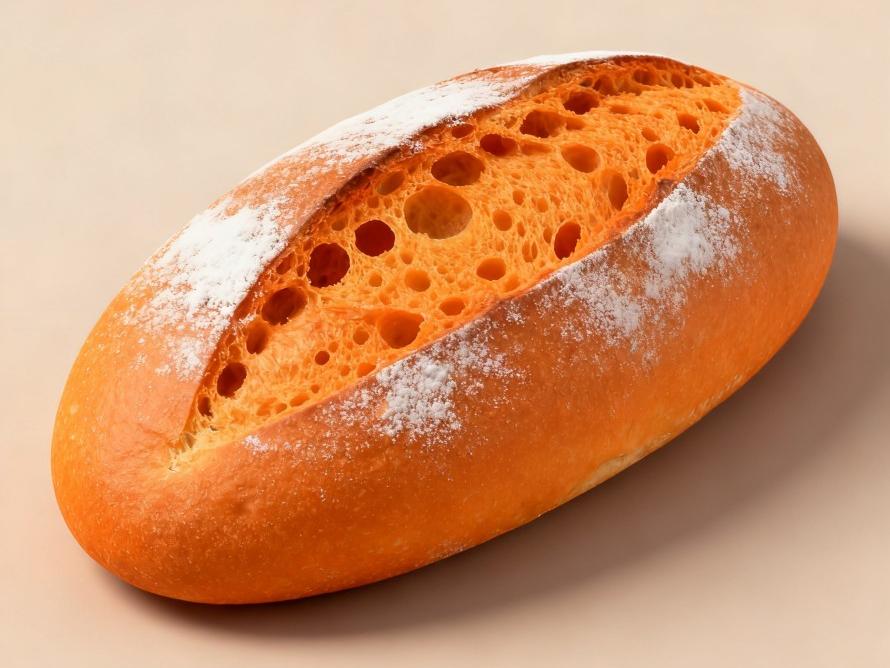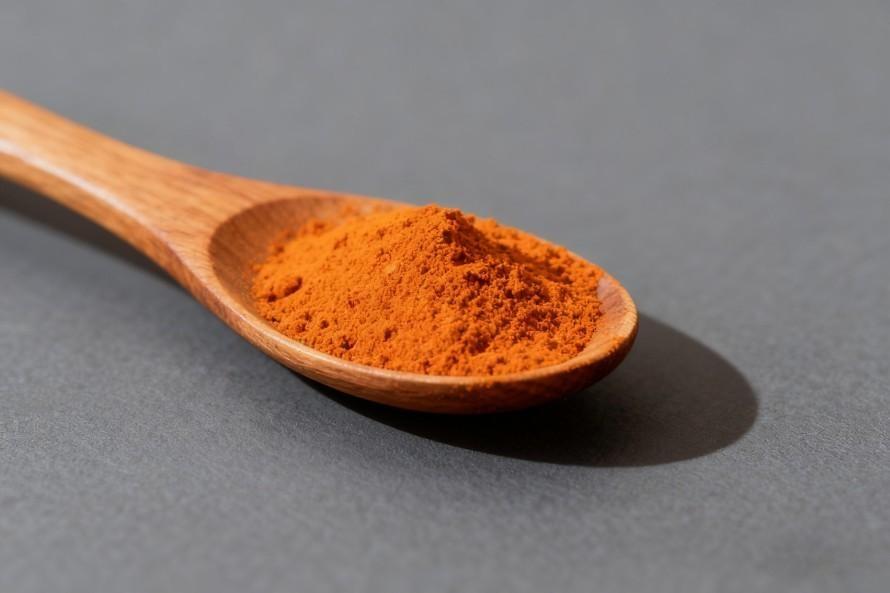Natural Beta Carotene Ingredient Ultimate Solution
In today's world where health and natural ingredients dominate global consumption trends, beta-carotene—a star ingredient combining nutritional fortification and coloring functions—continues to see rising market demand. However, the transition from ideal laboratory properties to stable industrial-scale application has made the comprehensive capabilities of raw material suppliers the critical bottleneck determining the success or failure of end products.
Are you facing these deep-seated challenges in your applications?
· Stability Dilemma: Color Fading and Flavor Deterioration
The abundant conjugated double bond structure in beta-carotene molecules makes it highly susceptible to oxidative degradation under oxygen, light exposure, and high-temperature processing conditions. This not only causes the product's vibrant orange-yellow color to fade rapidly but also triggers rancidity in fats, producing unpleasant off-flavors that directly compromise product appearance and sensory experience.
· Application Challenges: Dispersion in Aqueous Systems and Low Bioavailability
As a fat-soluble compound, beta-carotene struggles to be directly incorporated into water-based products like juices and beverages, often resulting in precipitation, uneven distribution, and unsightly “color spots.” Additionally, its crystalline form exhibits low absorption and utilization rates in the human body, significantly diminishing its nutritional value as a provitamin A precursor.
· Process Compatibility Challenges: Significant Losses During Thermal Processing
Common food processing steps like baking, UHT sterilization, and extrusion cause substantial degradation of standard beta-carotene raw materials due to thermal degradation. This results in final products failing color standards and rendering nutritional claims invalid, making your product development efforts twice the work for half the results.
· Regulatory & Claim Complexities: Sourcing Ambiguity & Certification Gaps
Raw materials from synthetic, natural extraction, and fermentation sources exhibit significant disparities in cost, regulatory status (particularly “natural” labeling), and market access. Suppliers unable to provide comprehensive organic, halal, or other certifications directly limit your product positioning and market reach.
These challenges translate to higher development costs, shorter shelf life, inconsistent quality performance, and constrained market opportunities.
Green Spring Technology Solution: Empowering Your Product Innovation at the Source
Green Spring Technology deeply understands these application pain points. We offer far more than just a beta-carotene ingredient—we provide a comprehensive solution addressing core challenges in stability, application, and compliance.
Through our proprietary formulation technology, rigorous end-to-end quality control, and complete global certifications, we are committed to being your trusted technology partner, helping you:
· Lock in product quality by overcoming fading and oxidation challenges, significantly extending shelf life.
· Expand application boundaries by effortlessly coloring aqueous systems while substantially boosting nutritional potency.
· Optimize production processes, reduce processing losses, and ensure consistency from raw materials to finished products.
· Access global markets by empowering your product claims with comprehensive certification and compliance support.
Part One: What is Beta-Carotene Raw Material?
Beta-carotene is a naturally occurring carotenoid and a precursor to Vitamin A. It serves not only as a safe and effective colorant but also as a vital nutritional fortifier. In modern industrial production, it is primarily obtained through three technical pathways:
1. Core Definition and Sources
· Chemical Synthesis: Prepared through organic synthesis processes, offering high cost-effectiveness and stable purity. It is the standard raw material widely used in the food and health supplement industries.
· Natural Extraction: Derived from natural plants such as carrots and palm fruits, aligning with clean label trends.
· Microbial Fermentation: Produced through fermentation by microorganisms like Trichoderma rubrum, combining natural attributes with process controllability
2. Physical Properties and Specifications
· Appearance: Deep reddish-purple to reddish-brown crystalline powder; oil suspensions exhibit vivid orange-yellow color
· Solubility: Lipid-soluble compound; insoluble in water; readily soluble in fats, oils, and organic solvents
· Product Specifications: Commercially available in standard concentrations ranging from 1% to 30%, with custom formulations available
3. Regulatory Status and Compliance
· Food Sector: Recognized as a safe colorant by authoritative bodies including China's GB 2760, the Codex Alimentarius Commission (INS 160a), and the U.S. FDA
· Health Supplement Applications: Serves as a premium source of vitamin A with clear regulatory status in nutritional supplements
· Cosmetic Applications: Listed in China's Catalogue of Cosmetic Ingredients in Use, safe for use in color cosmetics and skincare products
4. Conversion Relationship with Vitamin A
In the human body, beta-carotene can be enzymatically converted into retinol (vitamin A). This unique conversion characteristic makes it:
· A safe source of vitamin A supplementation, avoiding risks associated with direct excessive intake
· A self-regulating nutritional fortification solution
· A multifunctional ingredient combining coloring and nutritional fortification
5. Technological Evolution
From initial natural extraction to modern fermentation processes, beta-carotene production technology has undergone continuous innovation. Currently, formulation techniques like microencapsulation and emulsification have successfully overcome inherent stability and solubility challenges, enabling broader application scenarios.

Part Two: Diverse Application Scenarios for Beta-Carotene Raw Materials
Leveraging its unique coloring capabilities and nutritional properties, beta-carotene has become an indispensable multifunctional ingredient in modern food, health supplement, and cosmetics industries. Its application scope continues to expand alongside technological innovations.
1. Food and Beverage Industry
· Dairy and Fat-Based Foods
· Application Categories: Butter, Cheese, Margarine, Ice Cream
· Solution: Leveraging its fat-soluble properties to deliver stable, uniform coloring effects
· Technical Advantage: Green Spring Technology's oil suspension formulations ensure color uniformity ≥95%
· Beverages and Juice Products
· Application Categories: Functional beverages, fruit juice drinks, powdered beverages
· Solution: Utilizing microencapsulation and water-dispersible technology
· Technical Advantages: Our water-dispersible emulsions achieve stability for up to 12 months
· Bakery and Confectionery Products
· Application Categories: Biscuits, Cakes, Chocolate, Candy
· Solution: Heat-resistant microencapsulated products
· Technical Advantages: Maintains over 90% color retention under 180°C baking conditions
2. Nutritional Health Products Sector
· Dietary Supplements
· Formulation Adaptability: Soft capsules, hard capsules, tablets
· Functional Value: Serves as a provitamin A source, providing safe nutritional supplementation
· Technical Features: Green Spring Technology's high bioavailability formulations enhance absorption rates to 2-3 times that of traditional formulations
· Foods for Special Medical Purposes
· Application Scenario: Special medical foods for populations with vitamin A deficiency
· Solution: Precise dosage control ensures nutritional safety
3. Cosmetics and Personal Care
· Color Cosmetics
· Application Categories: Lipstick, Blush, Foundation
· Color Effects: Offers natural shades ranging from soft orange to vibrant red
· Product Advantages: Green Spring Technology's cosmetic-grade ingredients comply with COSMOS standards
· Skincare Products
· Application Categories: Creams, lotions, serums
· Added Value: Provides natural coloring while delivering antioxidant benefits
4. Animal Nutrition & Pet Food
· Application Value: Enhances the color and texture of aquatic products
· Technical Solution: Green Spring Technology provides specialized aquaculture formulations
· Pet Food
· Application Categories: Dog food, cat food, ornamental fish feed
· Dual Benefits: Enhances product visual appeal while supplementing essential nutrients

5. Emerging Application Areas
· Plant-Based Products
· Innovative Applications: Coloring plant-based meat alternatives, coloring plant-based cheese
· Market Value: Enhances visual appeal of plant-based products
· Pharmaceutical Excipients
· Professional Applications: Coloring drug coatings, identification markers
· Compliance Assurance: Green Spring Technology provides products meeting pharmaceutical-grade standards
Part Three: Scientific Mechanisms Underlying Beta-Carotene's Functionality
To fully leverage beta-carotene's exceptional performance across diverse applications, a deep understanding of its rigorous scientific mechanisms is essential. As a naturally sourced colorant and nutritional fortifier, its unique functionality stems from its precise molecular structure and physicochemical properties.
1. Molecular Basis of Color Presentation
· Chromophore Structural Characteristics
· Conjugated Double Bond System: Beta-carotene molecules contain a linear polyene chain with 11 conjugated double bonds, forming a highly delocalized π-electron system
· Light Absorption Properties: This conjugated system selectively absorbs blue-violet light in the 400-500nm wavelength range of the visible spectrum, reflecting complementary orange-yellow light
· Color Stability: The length and integrity of the conjugated chain directly determine the saturation and stability of the color.
2. Scientific Analysis of Stability Mechanisms
· Mechanism of Oxidative Sensitivity
· Molecular Structural Vulnerability: The high electron density of conjugated double bonds makes them susceptible to reactive oxygen species (ROS) attack, triggering chain oxidation reactions.
· Degradation Pathway: Oxidation breaks the conjugated system, forming small-molecule aldehyde-ketone compounds, manifesting as color fading and flavor deterioration.
· Environmental Influence Mechanism
· Photocatalytic Degradation: UV light provides the activation energy required to break chemical bonds, accelerating molecular degradation.
· Thermally Induced Isomerization: Trans-cis isomerization occurs under high temperatures, altering light absorption properties and affecting color expression.
3. Structure-Activity Relationship of Solubility and Bioavailability
· Lipophilic Nature
· Molecular Polarity Characteristics: Highly nonpolar hydrocarbon structure adheres to the “like dissolves like” principle, facilitating solubility in lipid media.
· Crystalline form impact: Raw material crystal morphology and particle size distribution directly influence dissolution rate and bioavailability
· Absorption and conversion mechanisms
· Intestinal absorption pathway: Catalytically cleaved by β-carotene-15,15'-dioxygenase within intestinal mucosal cells
· Conversion regulation mechanism: Adjusts conversion efficiency based on physiological needs to prevent vitamin A toxicity risks
4. Scientific Principles of Technological Improvements
· Stability Enhancement Technologies
· Microencapsulation Mechanism: Constructs a physical barrier with wall materials to block degradation factors like oxygen and light
· Synergistic Antioxidant System: Combines natural antioxidants to interrupt free radical chain reactions
· Application Performance Optimization
· Emulsification System Construction: Forms stable oil-in-water emulsions via interfacial engineering for aqueous dispersion
· Particle Size Control Technology: Optimizes particle size distribution to enhance dissolution rate and bioavailability
5. Scientific Basis for Safety
· Metabolic Pathway Research
· Conversion Regulation Characteristics: The body automatically adjusts conversion efficiency based on vitamin A levels, establishing a safety buffer
· Excretion Pathways: Unconverted portions are eliminated through normal metabolic pathways
· Consensus from Toxicological Research
· Safe intake range: Daily allowable intake standards established based on extensive research
· Metabolite safety: Primary metabolites fall within normal physiological metabolic parameters
Part Four: How to Select Suitable Beta-Carotene Raw Materials?
In the complex raw material market, establishing scientific evaluation criteria is key to product success. Selecting appropriate beta-carotene raw materials requires a professional perspective and systematic assessment across multiple dimensions.
1. Core Technical Metrics
· Purity and Component Analysis
· Active Ingredient Content: Ensure beta-carotene concentration meets declared specifications (1%-30% across different gradients)
· Impurity Profile Control: Strictly monitor critical safety indicators including heavy metals (lead, arsenic, mercury, cadmium) and solvent residues
· Isomer Composition: All-trans isomer ratio ≥85% to ensure bioavailability
· Physicochemical Characterization
· Solubility: Select suitable dosage forms (oil-soluble, water-dispersible, powder) based on application systems
· Particle Size Distribution: D90 ≤50μm to ensure dispersion uniformity and stability
· Color Stability: Batch-to-batch color difference ΔE must be controlled within ≤1.5
2. Stability Evaluation System
· Accelerated Stability Testing
· Thermal Stability: Color retention rate after 3 months at 40°C must ≥90%
· Light Stability: Evaluate color decay rate via light exposure testing
· Oxidative Stability: Monitor oxidation degradation via peroxide value
· Shelf Life Prediction
· Real-time Stability Data: Suppliers must provide complete stability study documentation
· Compatibility Testing: Evaluate interactions with product matrices
3. Supplier Qualification Review
· Quality System Certification
· Core Certifications: ISO9001, ISO22000 Quality Management Systems
· Industry Certifications: BRC, IFS, FDA registration, and other specialized qualifications
· Specific Certifications: Halal, Kosher, Organic certifications, etc.
· Production Capacity Evaluation
· Process Control Level: Assess stability and reproducibility of production processes
· Equipment Advancement: Evaluate modernization level of production facilities
4. Technical Support Capability
· Application Technical Support
· Formulation Development Assistance: Provide tailored application solutions
· Process Adaptation Recommendations: Suggest optimal usage based on production processes
· Troubleshooting Capability: Rapidly respond to and resolve technical issues during application
· R&D Innovation Capability
· Custom Development Capability: Offer product customization services for specialized requirements
· Technical Reserve Depth: Evaluate the supplier's R&D strength and technological foresight
5. Supply Chain Reliability
· Traceability System Integrity
· Raw Material Traceability: Establish a complete traceability system from source to finished product
· Batch Consistency: Assess product quality stability through historical data
· Supply Assurance Capability
· Production capacity: Ensuring stable supply capability
· Emergency response mechanism: Evaluating supply chain risk management capabilities
6. Regulatory Compliance
· Documentation completeness
· Compliance certification: Providing regulatory compliance statements for target markets
· Inspection reports: Providing complete COA (Certificate of Analysis) for each batch
· Technical documentation: TDS (Technical Data Sheet), MSDS (Material Safety Data Sheet)
· Claim support capability
· Nutrition Claim Support: Provide legally compliant nutritional data
· Organic Claim Support: Hold certifications such as USDA Organic, EU Organic
Establishing a robust evaluation system is fundamental to ensuring raw material quality. We recommend adopting a systematic assessment approach, utilizing multiple methods including sample testing, factory audits, and document reviews to guarantee selected raw material suppliers meet comprehensive requirements for product quality, safety, and compliance.
Part Five: Green Spring Technology Beta-Carotene Raw Material Comprehensive Solution
After defining rigorous selection criteria, what you need is a strategic partner that comprehensively meets and exceeds these standards. Leveraging deep industry expertise, a robust quality system, and innovative technical capabilities, Green Spring Technology offers not just products, but a reliable, efficient, and worry-free comprehensive beta-carotene raw material solution.
1. Comprehensive Product Matrix
Green Spring Technology provides a complete beta-carotene product series to meet diverse industry needs:
Standardized Product Series:
· High-Purity Series:
· Pure Beta-Carotene Powder (98%) - Pharmaceutical-grade purity for premium health supplements and pharmaceuticals
· Food-Grade Pure Beta-Carotene Powder (10%) - Standard food additive with excellent cost-effectiveness
· Functional Series:
· 1% Beta-Carotene Powder (Cold-Water Soluble) - Utilizes unique encapsulation technology for rapid dissolution in cold water systems
· 30% Pure Beta-Carotene Powder (Skin Care Grade)https://www.greenspringnatural.com/10-beta-carotene-oil-for-skin.html - Ultra-fine powder specifically designed for cosmetics with strong coloring power
· 10% Beta-Carotene Skin Care Oil - Oil-based formulation suitable for creams, lotions, and other skin care products
Innovative Formulations & Solutions:
· Microencapsulated Powder (Stability Solution): Utilizes patented encapsulation technology to significantly enhance raw material tolerance to oxygen, light, and heat. Color retention exceeds standard powders by over 50%, making it ideal for baking, solid beverages, and similar products.
· Water-Dispersible Emulsion (Application Solution): Overcomes challenges in applying fat-soluble pigments in aqueous systems. Products instantly disperse in aqueous systems to form uniform, stable emulsions, completely eliminating sedimentation and separation issues. Specifically designed for juices, beverages, confectionery, and similar products.
· High Bioavailability Formulations (Nutritional Fortification Solutions): Utilizing nano-emulsification and other technologies, raw material particle sizes are reduced to micron or even nanoscale levels. This achieves 2-3 times higher absorption and utilization rates in the body compared to traditional crystalline forms, making your nutritional claims more compelling.
2. Full-chain Quality Assurance & Global Certification Support
We firmly believe quality is the foundation of trust. Green Spring Technology has established a comprehensive quality control system from source to finished product:
· System Assurance: Our facilities hold ISO9001, ISO22000, BRC, IFS, and other internationally recognized certifications, ensuring standardized and traceable production at every stage.
· Comprehensive Certifications: Our products hold Halal, Kosher, COSMOS (organic cosmetics), USDA Organic, EU Organic, and other certifications—providing complete “passports” for your products to access major global markets.
· Regulatory Compliance: All products meet target market regulations including China's GB standards, US FDA requirements, and EU EFSA guidelines, accompanied by comprehensive COA, TDS, MSDS, and compliance statements.
3. Technical and Service Support That Exceeds Expectations
Choosing Green Spring means gaining access to a powerful external R&D and technical support team:
· Customized Development: Leveraging our extensive product platforms, we offer flexible customization services tailored to your specific formulation requirements (e.g., acid resistance, heat resistance) and application scenarios. This includes adjustments to concentration, particle size, and carriers.
· Comprehensive Application Support: From sample testing and process parameter recommendations to shelf-life evaluation, our technical experts provide end-to-end assistance to optimize formulations and overcome application challenges.
· Stable and Reliable Supply Chain: Our large-scale, continuous production capacity ensures consistent supply and rapid delivery, making us a dependable link in your supply chain.
In summary, Green Spring Technology's solutions are designed to completely free you from concerns regarding raw material stability, applicability, and compliance. We not only offer beta-carotene raw materials in diverse forms and sources but also provide specialized technical support and customized solutions tailored to your specific product type, processing technology, and market positioning. We commit to being your trusted strategic partner through exceptional product quality, comprehensive certification, and professional technical services—empowering you to focus on core innovation and jointly seize market opportunities.

Part Six: Q&A: Common Questions About Beta-Carotene Raw Materials
To help you better understand and utilize beta-carotene raw materials, we have compiled the most frequently asked questions from our clients and provided professional, detailed answers.
Q1: What is the difference and relationship between beta-carotene and vitamin A?
A: This is the most fundamental and crucial question. Their relationship is as follows:
· Chemical Structure: Beta-carotene consists of two vitamin A molecules linked tail-to-tail, making it a provitamin A.
· Conversion Relationship: In the human small intestine and liver, beta-carotene can be cleaved and converted into retinol (vitamin A) under the action of enzymes.
· Core distinction: Vitamin A is a preformed active substance that can be directly utilized, while beta-carotene is a precursor requiring conversion. This conversion characteristic makes it a safer source of vitamin A supplementation, as the body regulates the conversion rate as needed, avoiding the risk of direct vitamin A overdose.
Q2: How do I select the most suitable beta-carotene product for my aqueous beverage?
A: For aqueous systems, we strongly recommend using 1% cold-water soluble beta-carotene powder or water-dispersible emulsion.
· The 1% cold-water soluble powder employs specialized microencapsulation and hydrophilic treatment, enabling rapid dissolution and uniform dispersion in water to form a stable solution. This perfectly resolves sedimentation and “color spotting” issues.
· The water-dispersible emulsion is a pre-emulsified liquid form, easier to measure and blend in production lines, providing a cloudy, juice-like appearance.
Our technical team can recommend the most suitable formulation based on your product's specific pH, clarity, and processing conditions.
Q3: Are there special requirements for beta-carotene raw materials used in cosmetics?
A: Yes, cosmetic-grade raw materials have stricter standards. Green Spring Technology has developed a dedicated product line:
· 30% Pure Beta-Carotene Powder (Skin Care Grade) Features finer particle size and lower microbial counts to ensure formulation smoothness and safety.
· 10% Beta-Carotene Skincare Oil Formulated with cosmetic-grade oils as a carrier, it allows direct incorporation into oil phases. Provides natural orange-to-red hues and complies with organic cosmetic standards like COSMOS.
All cosmetic-grade materials come with complete compliance documentation to support your product registration.
Q4: How should I choose between 98% high-purity powder and 10% food-grade powder?
A: The choice depends on your application goals and cost considerations:
· 98% High-Purity Powder: Primarily used in premium pharmaceuticals and health supplements, such as soft and hard capsules, where precise active ingredient dosing and ultra-high purity are paramount.
· 10% Food-Grade Powder: Primarily used for coloring general foods and beverages, such as candies, ice cream, and baked goods. It exists as a carrier (e.g., starch, colloid), facilitating easier mixing within food ingredients while offering superior cost-effectiveness.
Q5: What specific requirements apply for beta-carotene to be labeled “natural”?
A: This depends on target market regulations. Typically, “natural” claims require beta-carotene to be derived from plants (e.g., algae, carrots) or microbial fermentation, rather than chemical synthesis. Green Spring Technology offers natural beta-carotene derived from Dunaliella salina, holding USDA Organic and EU Organic certifications to fully support your product's “natural” and “organic” labeling claims.
Q6: How should beta-carotene raw materials be stored to ensure stability?
A: Proper storage is critical. We recommend:
· All powders and oil-based products should be stored sealed in a cool, dry, dark place.
· Maintain ideal storage conditions below 25°C (77°F) with relative humidity under 65%.
· Use opened containers promptly, resealing immediately after dispensing to minimize exposure to oxygen and moisture.
· For oil suspensions, consume within the shelf life and avoid repeated freeze-thaw cycles.
Part Seven: Unlock Safe and Efficient Coloring Solutions
Exceptional products begin with the right choice. As your trusted beta-carotene raw material partner, Green Spring Technology stands ready to provide professional product solutions and technical support.
Contact us today to access:
· Complimentary sample trials
· Comprehensive product documentation
· Expert technical consultation
· Customized solution discussions
Contact Us
· Company Phone: +86 29 88313578
· Mobile/WhatsApp: +86 13649243917
· Business Email: helen@greenspringbio.com
· Official Website: https://www.greenspringnatural.com/
Our technical team will promptly assist you in developing more market-competitive products.
Let Green Spring Technology be your most reliable raw material partner as we pioneer a new era of healthy color together!
-
Prev
The Ultimate Solution for Natural Astaxanthin Ingredient
-
Next
Fading and Sedimentation? Find Our Ultimate Solution with Copper Sodium Chlorophyllin


 English
English French
French Spanish
Spanish Russian
Russian Korean
Korean Japanese
Japanese





